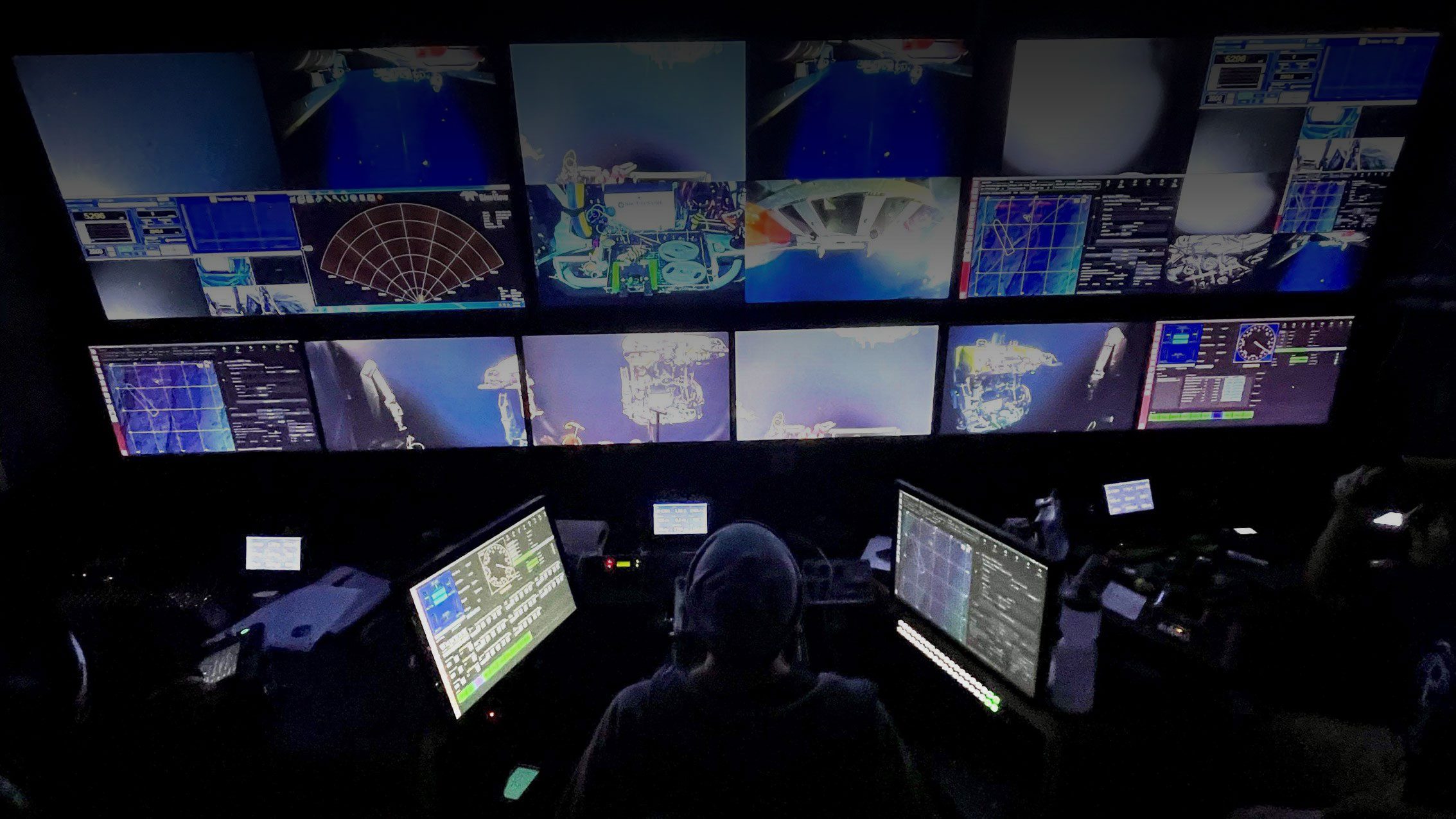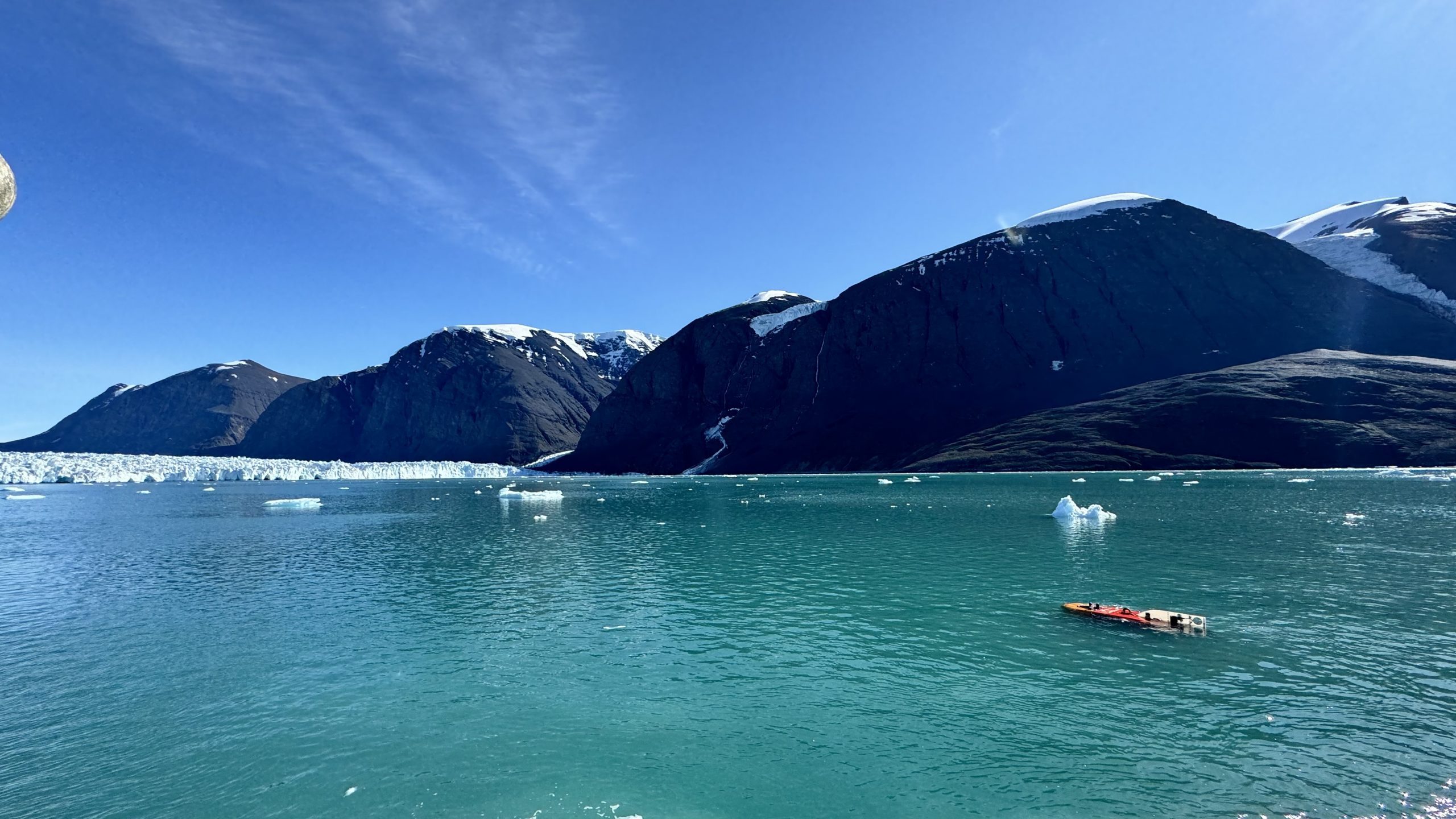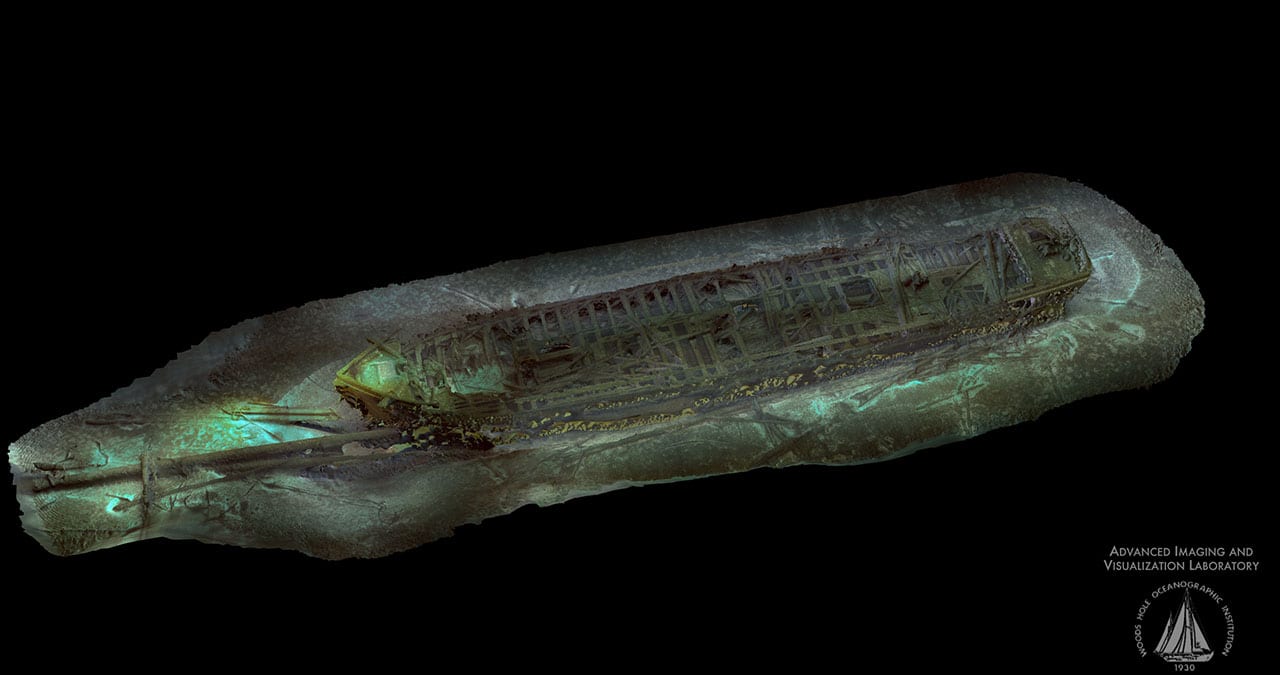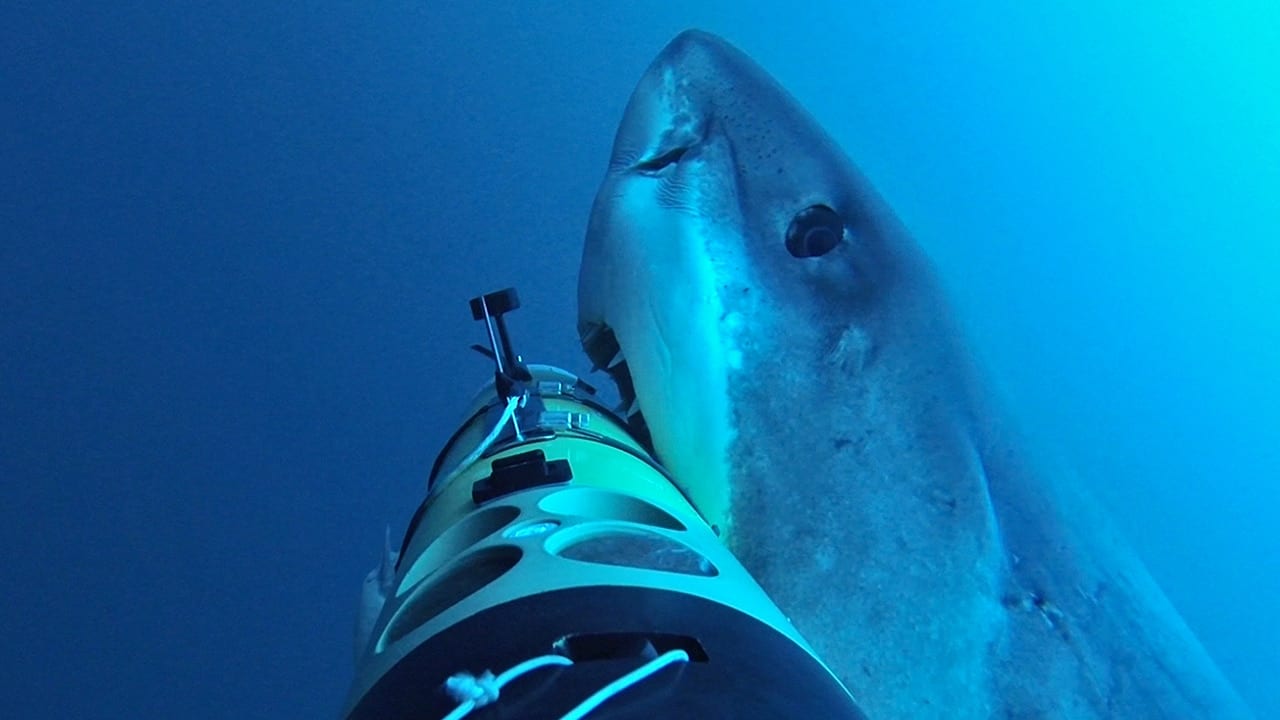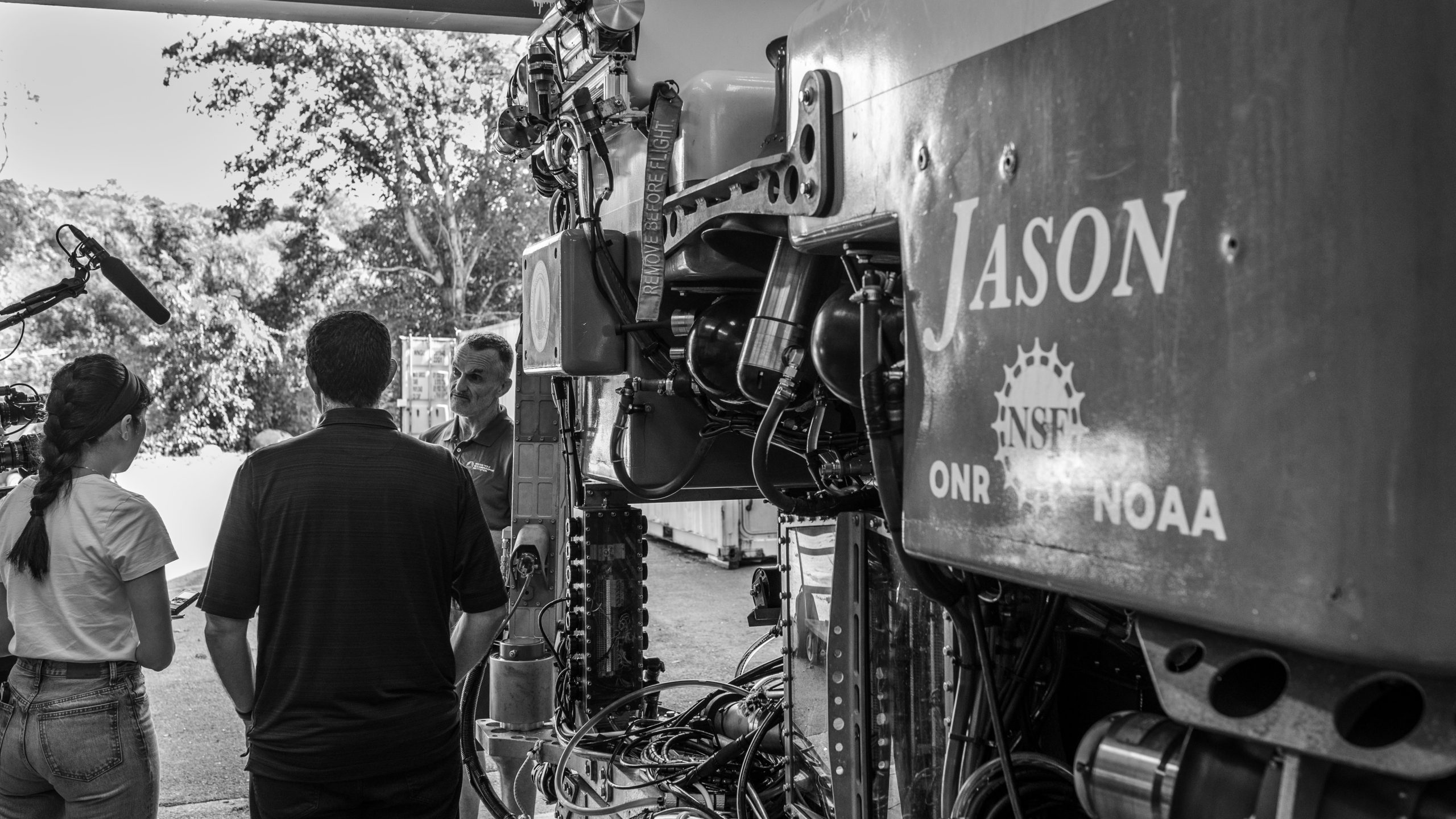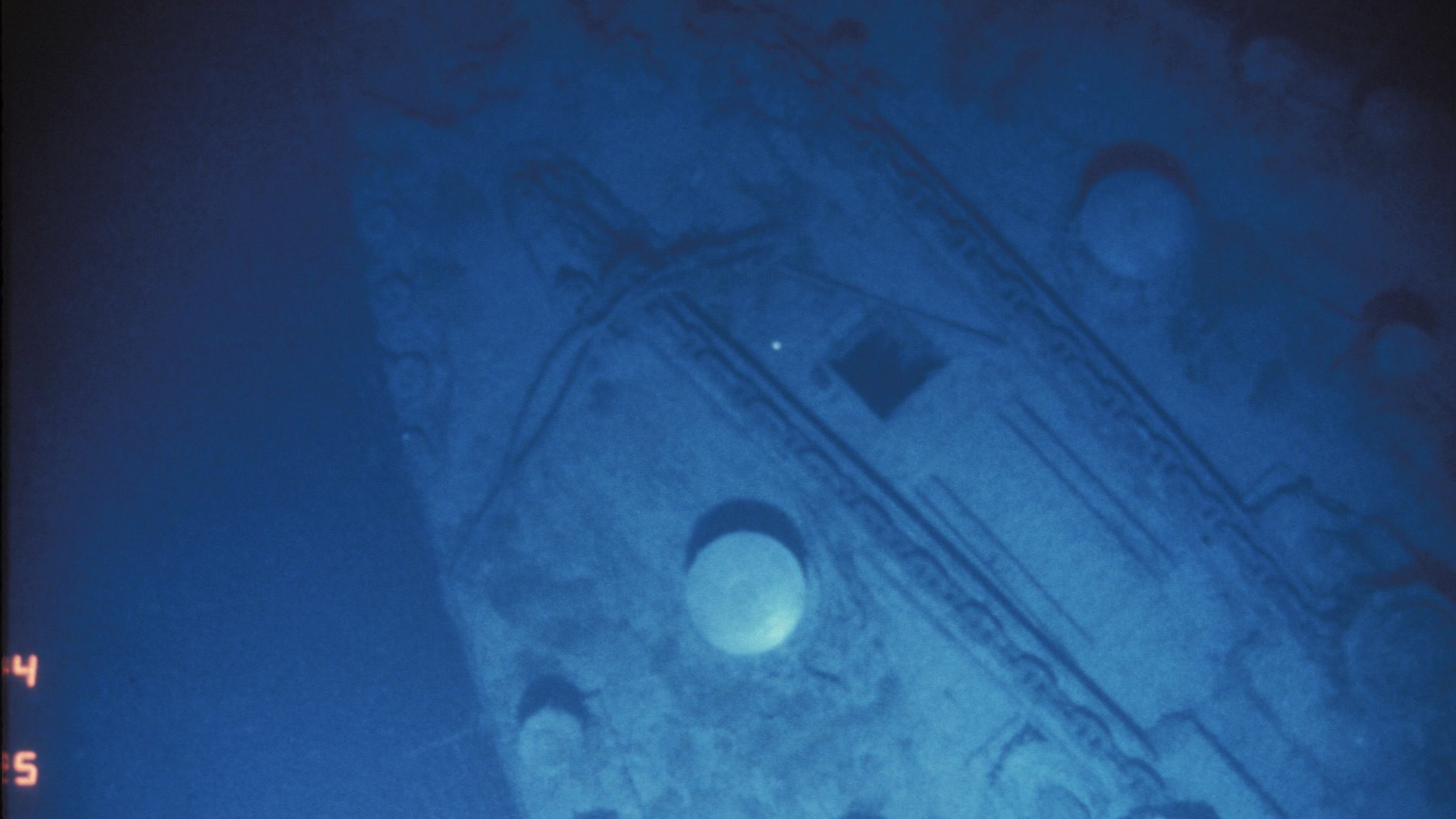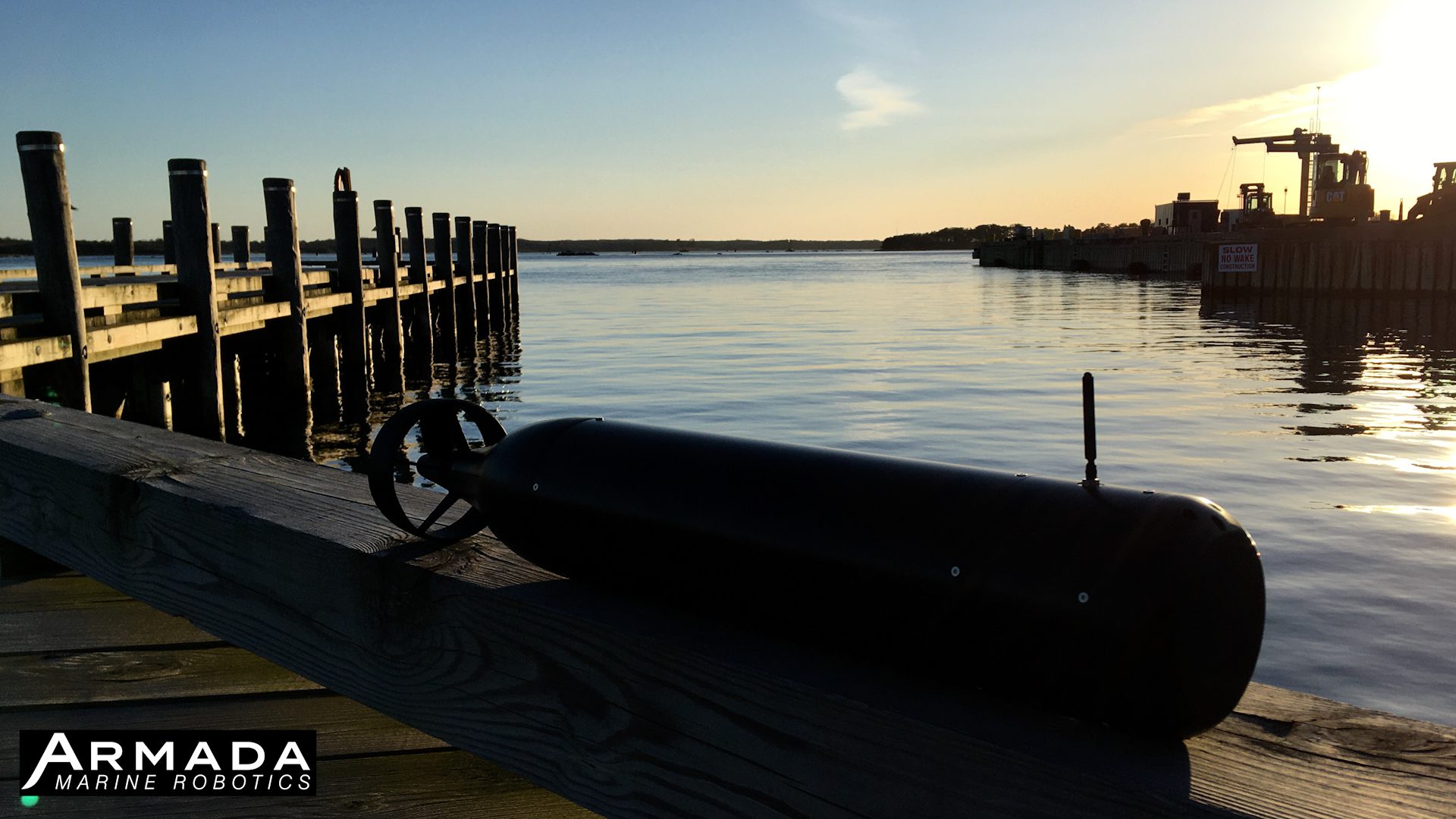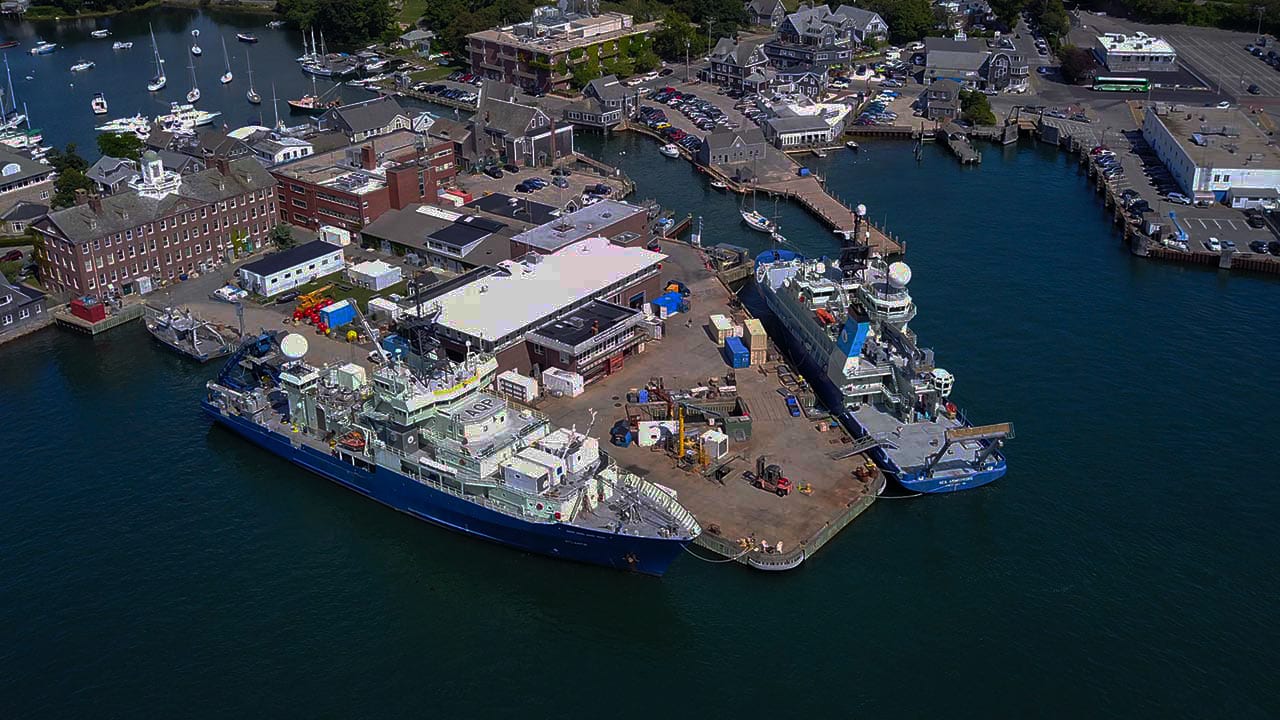News Releases
ROV Jason helps recover two other underwater vehicles
On September 2, the remotely operated vehicle (ROV) Jason aided in the recovery of two underwater vehicles, ROV Hercules and Argus, that were stranded on the seafloor near British Columbia
Read MoreWHOI Selects Hydroid to Provide Autonomous Underwater Vehicles for Ocean Observatories Initiative
The Woods Hole Oceanographic Institution and the Consortium for Ocean Leadership announced Hydroid will provide Autonomous Underwater Vehicles (AUVs) and docking stations to support the Pioneer Array of the Ocean Observatories Initiative (OOI).
Read MoreMonitoring Baleen Whales with Autonomous Underwater Vehicles
Like robots of the deep, autonomous underwater vehicles, or AUVs, are growing in number and use in the oceans to perform scientific missions ranging from monitoring climate change to mapping…
Read MoreNew Science Channel Program Features WHOI Underwater Vehicles
A number of remotely operated and autonomous underwater vehicles developed and operated by Woods Hole Oceanographic Institution (WHOI) to explore the world’s oceans are featured in the new television program “Robots of the Deep,” scheduled for national premier on the Science Channel Friday, November 7, at 9 p.m. EST.
Read MoreWHOI vehicles go to extreme sides of the globe
Simultaneous missions near Greenland and American Samoa support critical research about ocean life and sea level rise
Read MoreWHOI underwater robot takes first known automated sample from ocean
A hybrid remotely operated vehicle developed by Woods Hole Oceanographic Institution (WHOI) took the first known automated sample performed by a robotic arm in the ocean.
Read MoreRe-envisioning Underwater Imaging
The Advanced Imaging and Visualization Laboratory (AIVL) at the Woods Hole Oceanographic Institution (WHOI) working with Marine Imaging Technologies has developed a revolutionary new multi-function, underwater imaging system capable of generating ultra-high definition television (UHDTV) video, 2-D mosaic imaging, and 3-D optical models of seafloor objects and environments. The new state-of-the-art technology is currently being field-tested on several submerged shipwreck sites in both the U.S. and Europe.
Read MoreRobotic Vehicles Offer a New Tool in Study of Shark Behavior
The dramatic video footage of a great white shark attacking the “REMUS SharkCam” autonomous underwater vehicle (AUV) brought some of the highest ratings to Discover Channel’s Shark Week 2014 and went viral on the Internet.
But while the footage was unprecedented, the scientific understanding enabled by the REMUS SharkCam is just as groundbreaking. The AUV was used during a science expedition in 2013 to better understand white shark behavior and represents the first successful efforts to autonomously track and image any animal in the marine environment. The research provides critical data to efforts to conserve these animals.
“We wanted to test the REMUS SharkCam technology to prove that is was a viable tool for observing marine animals – sharks in this case – and to collect substantial data about the animals’s behavior and habitat,” said WHOI engineer Amy Kukulya, one of REMUS SharkCam’s principal investigators.
The research results were recently published in the Journal of Fish Biology. The paper’s lead author is Greg Skomal, a biologist with the Massachusetts Division of Marine Fisheries. In addition to Kukulya, co-authors include biologist E. M. Hoyos-Padilla of Pelagios-Kakunjá, a Mexican marine conservation organization, and WHOI engineer and REMUS SharkCam software developer Roger Stokey.
Read MoreUnderwater Robot Sheds New Light on Antarctic Sea Ice
The first detailed, high-resolution 3-D maps of Antarctic sea ice have been developed using an underwater robot. Scientists from the UK, USA and Australia say the new technology provides accurate ice thickness measurements from areas that were previously too difficult to access.
Read MoreWHOI Engineers Develop and Test New Underwater High-Speed Wireless Communication System
Engineers from the Woods Hole Oceanographic Institution (WHOI) have developed a new wireless underwater communication system to control remotely operated vehicles (ROVs) in real time. This new method may eliminate…
Read MoreNational Deep Submergence Facility Vehicles Assist in Response to Deepwater Horizon Oil Spill
The U.S. National Deep Submergence Facility (NDSF) has had a growing and important role in the ocean science community’s response to the 2010 Deepwater Horizon oil spill in the Gulf…
Read MoreRevolutionary Communications System Promises New Generation of Untethered, Undersea Vehicles
Woods Hole Oceanographic Institution (WHOI) engineers and scientists are employing a combination of new undersea technologies to re-define how we think of tethered, remotely operated vehicles. Using the 11,000 meter-rated Nereus hybrid remotely operated vehicle (HROV) as a test platform, engineers at WHOI recently demonstrated a new system that integrates acoustics with optics. This achievement, they say, opens the way to new opportunities in communications between untethered remotely operated vehicles (UTROVs) and their human operators?literally ?cutting the cord? for undersea exploration.
Read MorePartnership Provides Autonomous Vehicles to Enable New Era of Deep Sea Research
The Woods Hole Oceanographic Institution (WHOI) has partnered with the Waitt Institute for Discovery to make deep-sea exploration technology and a world-class operations group broadly available for the oceanographic community.…
Read MoreExplorers to Use New Robotic Vehicles to Hunt for Life and Hydrothermal Vents on Arctic Seafloor
Researchers will probe the Gakkel Ridge during expedition that begins on July 1.
Read MoreUndersea Vehicles to Study Formation of Gold and Other Precious Metals On the Pacific Ocean Floor
An international team of scientists will explore the seafloor near Papua New Guinea in the western Pacific Ocean later this month with remotely operated and autonomous underwater vehicles, investigating active…
Read MoreAutonomous Underwater Vehicle Maps Ancient Greek Shipwreck
Additional contact: Denise Brehm MIT News Office 617-253-2704 brehm@mit.edu After lying hidden for millennia off the coast of Greece, a sunken 4th century B.C. merchant ship and its cargo have…
Read MoreNew Underwater Volcano Found Near Samoa
An international team of scientists, led by researchers at the Woods Hole Oceanographic Institution, Scripps Institution of Oceanography, University of Oregon and University of Sydney, has discovered an active underwater…
Read MoreScientists Find Active Underwater Volcano East of Samoa
Marine geologists from the Woods Hole Oceanographic Institution (WHOI) and the Scripps Institution of Oceanography (SIO) have confirmed the existence of an active underwater volcano east of Samoa. The volcano, recently named VailuluA?u by local students, is located about 28 miles east of TaA?u Island and rises more than 16,400 feet from the seafloor to within 2,000 feet of the ocean surface. The scientists found billowing “smoggy” water in the summit and extending out for more than five miles.
Read MoreAward-winning environmental documentary Out of Plain Sight to make Cape Cod debut at the Woods Hole Film Festival
Film shares the pivotal role of WHOI-operated underwater vehicles in the discovery of toxic waste dumped off California coast
Read MoreInstitute of Electrical & Electronics Engineers Honors WHOI Scientist
The Institute of Electrical and Electronics Engineers (IEEE) elected Dana Yoerger as a 2021 fellow for the development of autonomous underwater vehicles for deep-ocean exploration and science.
Read MoreCommonwealth Awards $5 M R&D Grant for Center for Marine Robotics
The Commonwealth of Massachusetts has awarded the Woods Hole Oceanographic Institution (WHOI) a $5 million grant toward the construction of new facilities for the testing and research into innovative marine robotics such autonomous underwater vehicles (AUVs). The five-year grant award is being made as part of the Collaborative Research and Development Matching Grant Program, managed by the Massachusetts Technology Collaborative (MassTech). The grant to WHOI’s Center for Marine Robotics will help accelerate the deployment of new and existing marine robotics technologies in Massachusetts
Read MoreForty years after the Titanic discovery, WHOI continues to advance ocean research and exploration
How cutting-edge technology, novel search techniques, and persistence paid off
Read MoreWoods Hole Oceanographic Institution Licenses Ocean Technology to ARMADA Marine Robotics
These agreements mark a significant milestone in WHOI’s efforts to foster innovation, entrepreneurship, and the commercialization of transformative ocean technologies.
Read MoreFall 2024: Woods Hole Oceanographic Institution Elects New Corporation Members
Woods Hole, Mass. – At Woods Hole Oceanographic Institution’s (WHOI’s) Fall Joint Meeting of the Board and Corporation today, Institution leaders elected five new Corporation Members. “I am pleased to…
Read More
